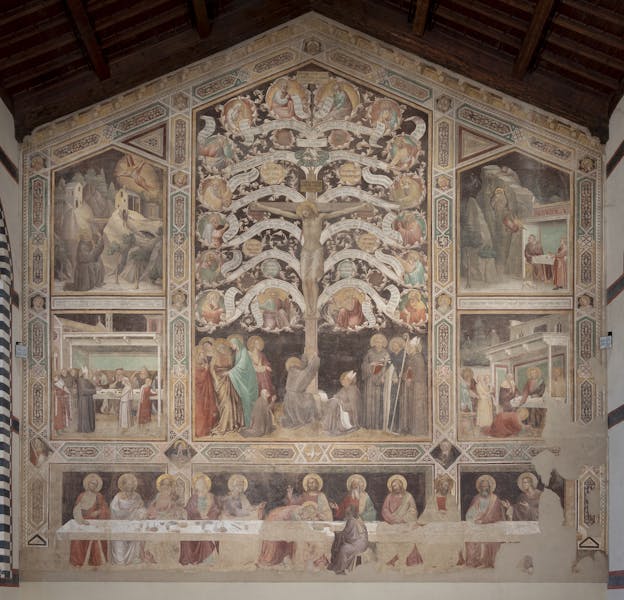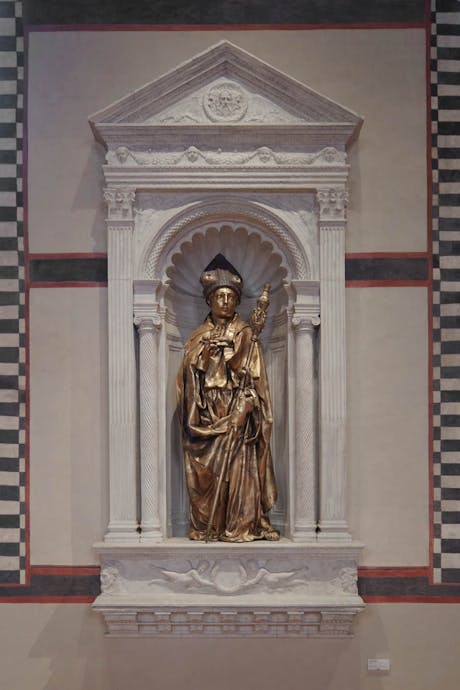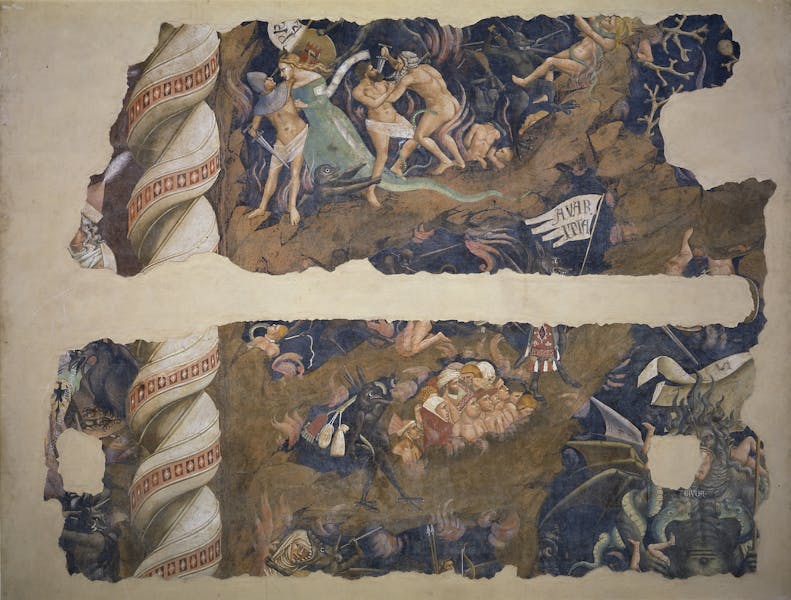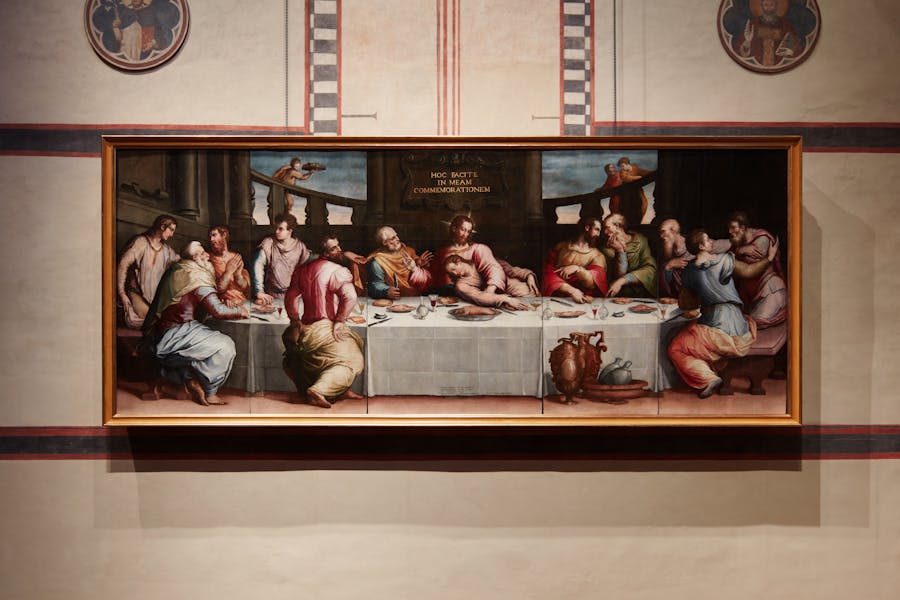
Refectory
in the first half of the 14th century, the convent's former refectory is a large rectangular room with a trussed wooden ceiling.
The room's original function is underscored by the convivial scenes depicted in Taddeo Gaddi's frescoes on the back wall, because this is the room in which the community of friars shared their meals, usually to the accompaniment of a reading from a religious work.

In the course of the 19th century the room was put to a variety of different uses, ranging from a carpet factory to a public works warehouse and, latterly, to a storage facility for works of art. The first kernel of the Museo dell'Opera opened here in 1900 to house such masterpieces as Donatello's St. Louis of Toulouse and Cimabue's Crucifix (now in the Sacristy).

These works were gradually joined by other pieces over the years, including the fragments of a grandiose fresco depicting the Triumph of Death, Hell and the Last Judgment painted by Andrea Orcagna in the south aisle of the church in c. 1345.

Andrea Orcagna, Hell, detail, c. 1345. Basilica of Santa Croce, Refectory
2016 saw the return of Vasari's panel painting of the Last Supper following lengthy restoration due to the damage it had suffered in the devastating flood of 1966.
The room's old function as a venue for sharing and debate is still maintained today thanks to a programme of conferences and concerts organised by the Opera di Santa Croce.
